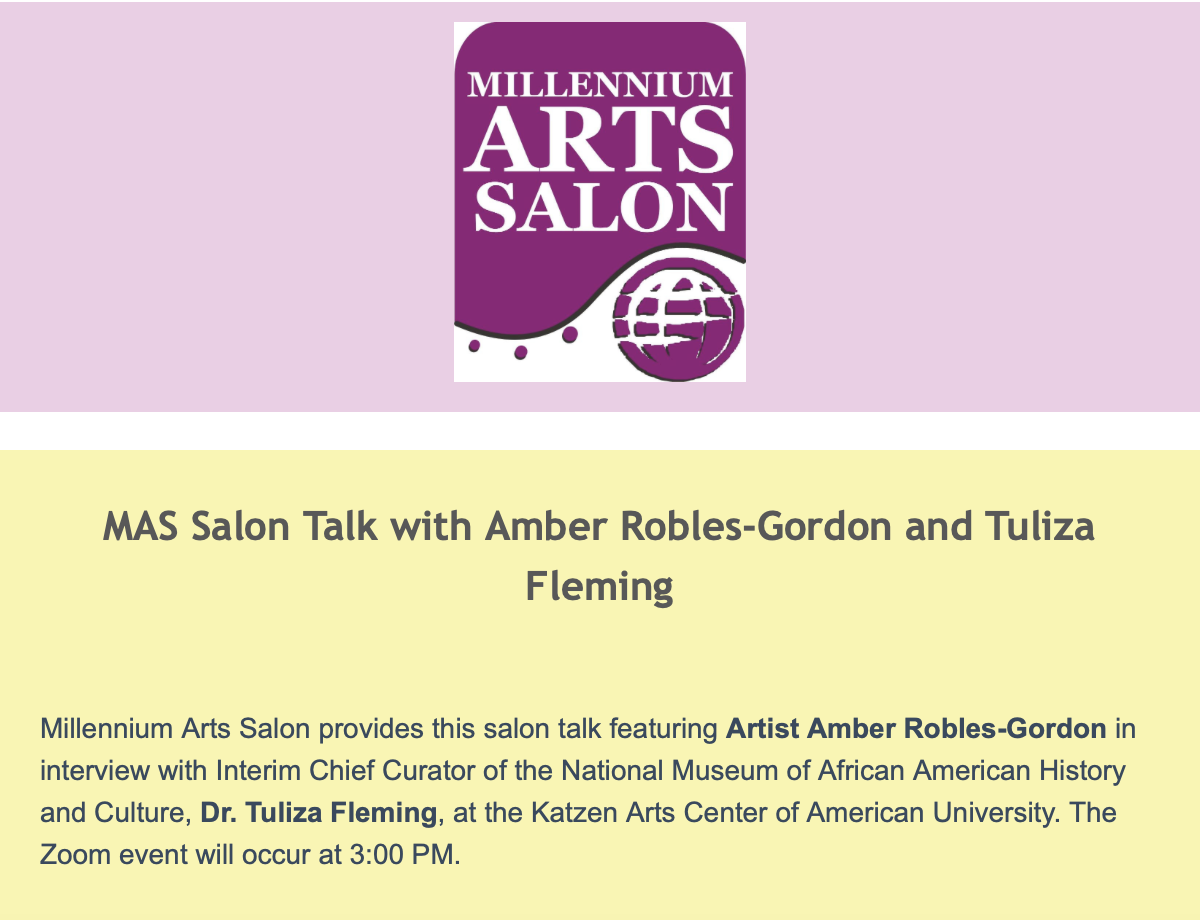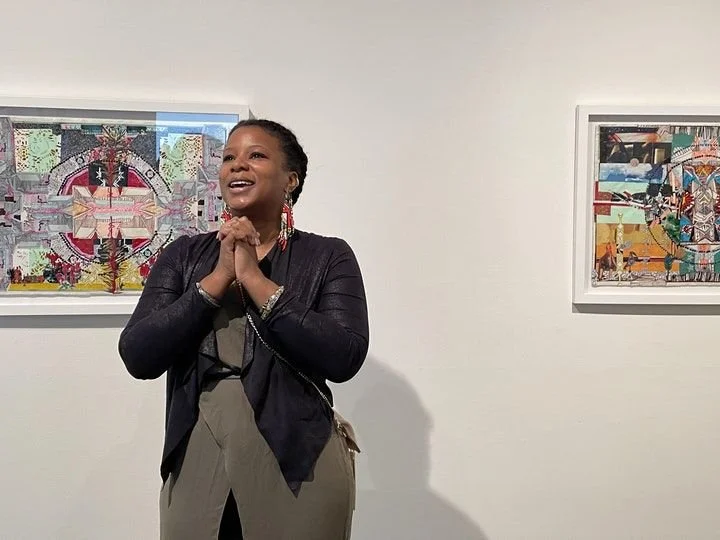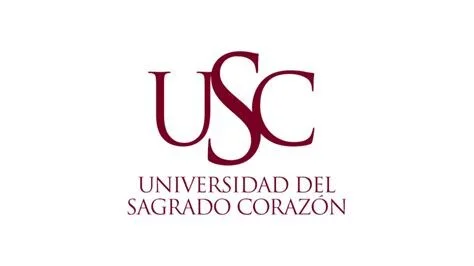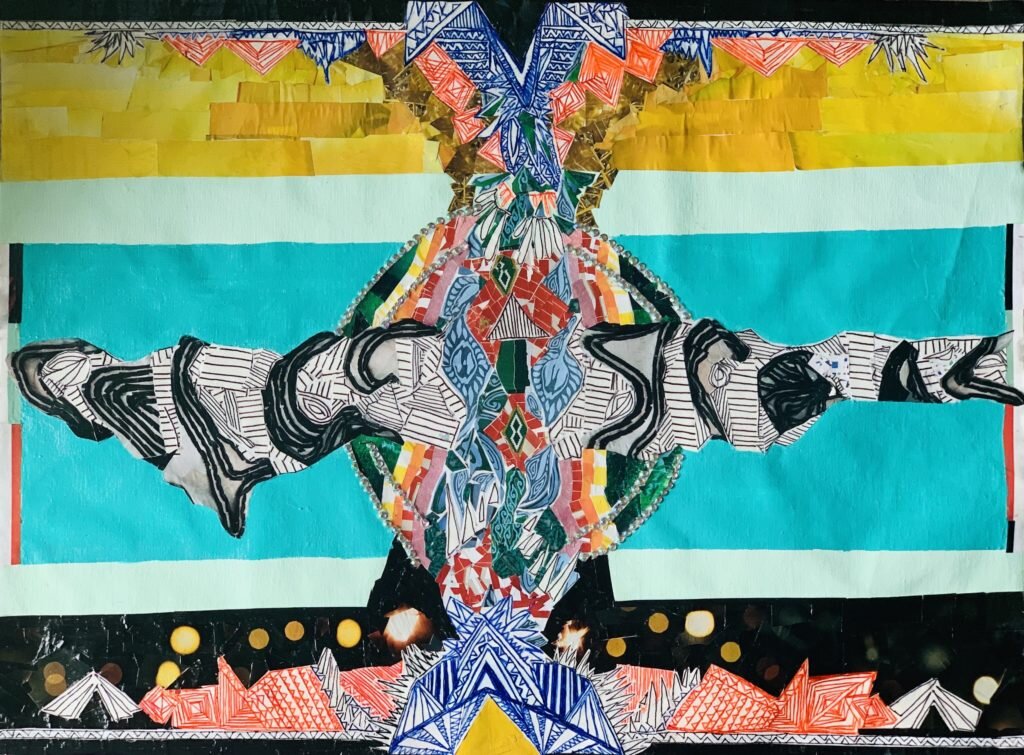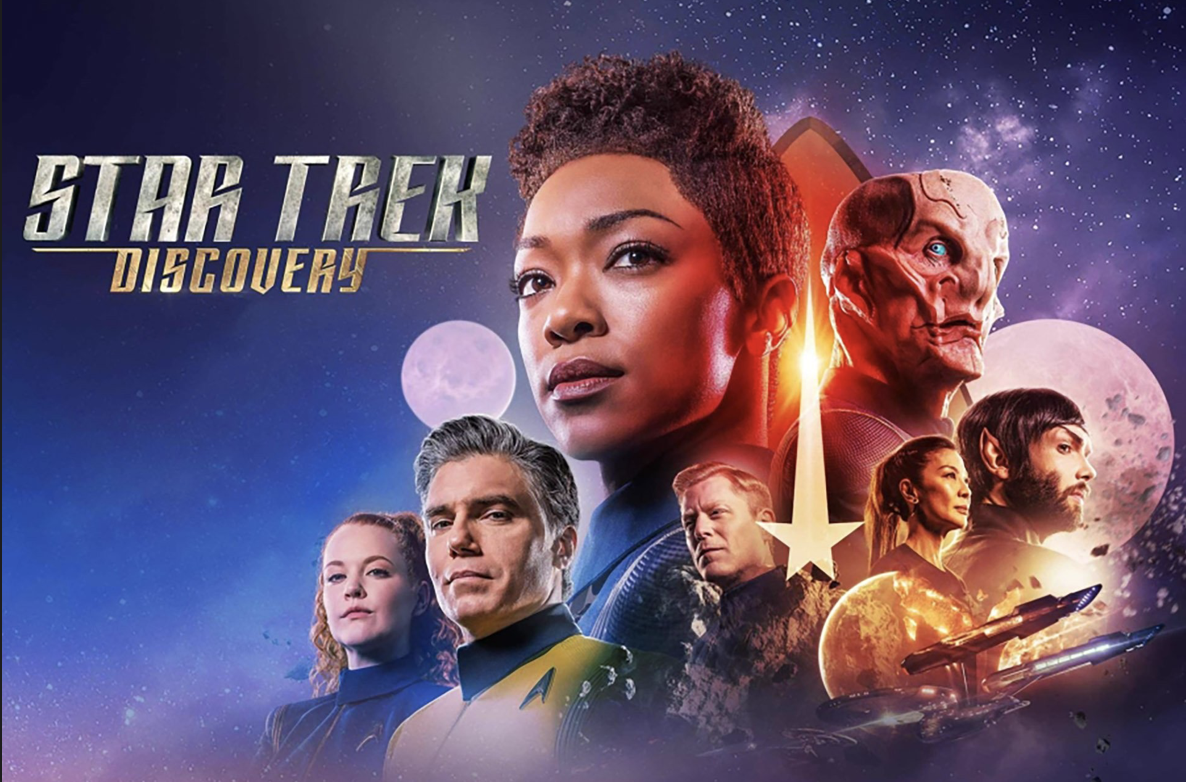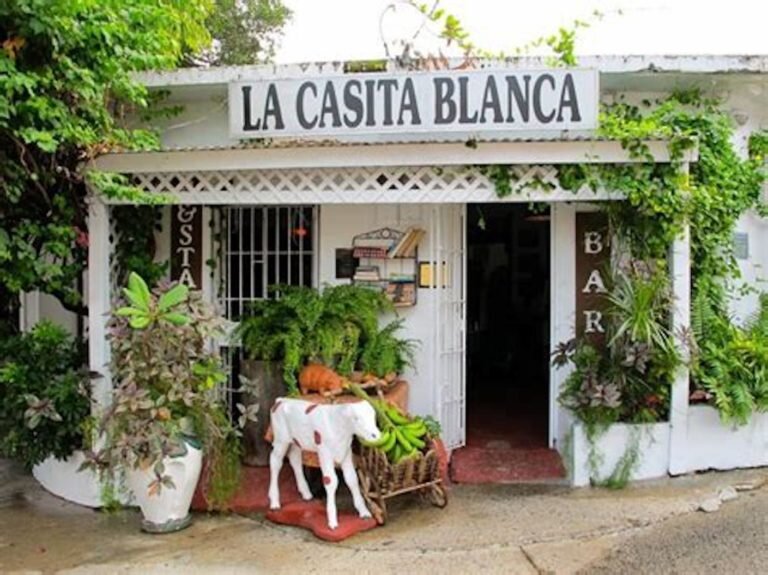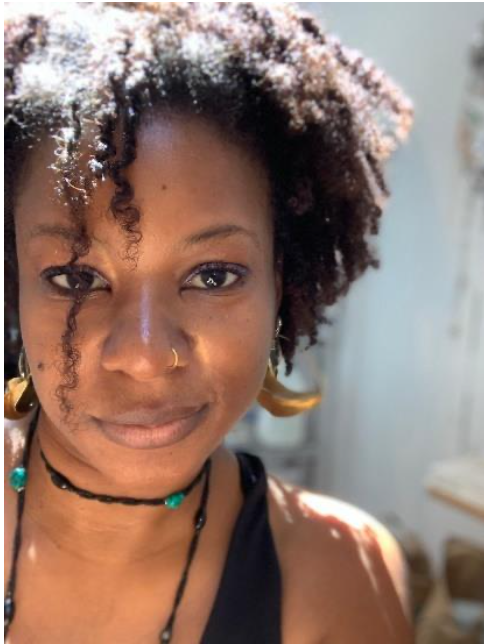Washington, DC — Seven “flags” hang in Amber Robles-Gordon’s show at the American University Museum: one for each of the five unincorporated United States territories in the Caribbean, one for the District of Columbia, and one to signify the artist’s place in between those locales.
Read MoreAmber Robles Gordon
Museums Review In the galleries: Artist’s works criss-cross the paths of U.S. colonialism
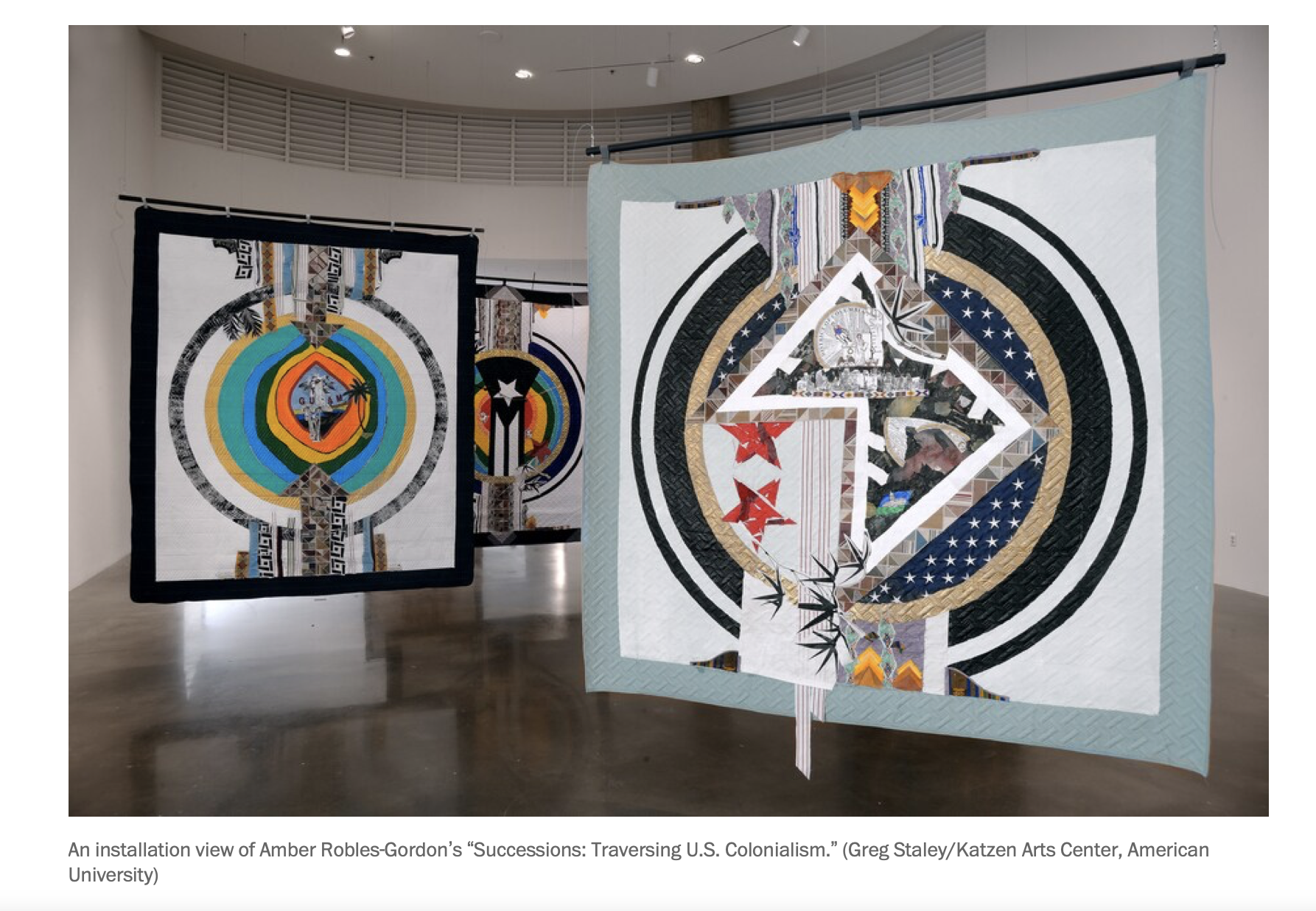
Residents of D.C. are used to seeing the place as an almost-state, much like Maryland or Wyoming, yet not quite. Amber Robles-Gordon, a longtime Washingtonian who was born in Puerto Rico, has a different take. Her American University Museum show, “Successions: Traversing U.S. Colonialism,” groups D.C. with her birthplace and four other inhabited territories: Guam, the U.S. Virgin Islands, American Samoa and the Northern Mariana Islands. She represents these disenfranchised territories on two-sided quilted banners, one face for “political” and the other for “spiritual.”
Read MoreExamining Black Existentialism through the Curatorial Lens
Join our panelists as they journey through texts by Octavia Butler and bell Hooks, Parable of the Sower and Salvation: Black People and Love. They will explore and discuss parallels and intersections between themes posited in these seminal texts and their own individual curatorial/artistic practices.
Read MoreWeaving Identity: A Conversation on Textile Practice in the 21 st Century
This panel explores the power of contemporary visual art through the practices of the Diaspora’s most preeminent artists who innovate through the use of textiles. The panel will also share how their works are impacted by black existential thought. Followed by Cocktails and Light Bites Vranken Pommery and Red Rooster.
Read MoreSuccessions: Traversing US Colonialism Listed on BmoreArt’s Picks: November 2-8
This Week: John Oliver’s hand-picked AVAM exhibition, A Passion for Collecting: The Vision of Louis Allan Ford at Galerie Myrtis, Zoë Charlton in conversation presented by Cade Gallery, Bridget Z. Sullivan at Hamilton Gallery, Jonna McKone/Keep A-Knockin’/Noah Breuer/Solo Lab 5 opening at VisArts, Amber Robles-Gordon at the Katzen Art Center, Katie Pumphrey: Night Swim at Project 1628, The Guardians presented by the Peale at Carroll Mansion, and more … plus Maryland Art Place UNDER $500 2021 and other featured calls for entry.
Read MoreAmber Robles-Gordon's Artwork Navigates US Colonialism for its Colonies, including DC
About this event
Millennium Arts Salon provides this salon talk featuring Artist Amber Robles-Gordon in interview with Interim Chief Curator of the National Museum of African American History and Culture, Dr. Tuliza Fleming, at the Katzen Arts Center of American University. Ms. Robles-Gordon, who was born in Puerto Rico, and raised in the DC area, examines the role of the United States as a colonial power with both Puerto Rico and the District of Columbia as two such colonies, with intimations of paternalism, tyranny, and containment of citizen aspiration attendant thereto. Dr. Fleming as scholar, will guide our better understanding of Amber's magnum opus, as she explores the underpinnings of the artwork from conceptualization to execution.
Millennium Arts Salon honors our relationship with the Katzen Arts Center in bringing programs of importance to our joint and several audiences in their beautiful and monumental space.
The MAS Salon Talk will be delivered over Zoom. Please register via the Eventbrite ticket engine and an email of the Zoom link will be sent to you before the event.
Please join us Saturday November 13 at 3:00 pm
Artfully yours,
The Board of Directors of Millennium Arts Salon
Trinity Talks with Artist Amber Robles-Gordon
Join the Office of Alumnae/i Relations for Trinity Talks with Amber Robles-Gordon ’05, Cultivating Inner Voice, Connective Tissues and Threading Visions, the Artwork of Amber Robles-Gordon on Tuesday, November 16, 2021 at 6:00 pm ET via Zoom.
Join Amber for an artist talk that focuses on following and cultivating a relationship with one’s inner voice and how that has directed her path thus far. She will highlight projects that exemplify this premise and how that lead to her first solo exhibit featured at American University.
Read MoreOf the Place, An American University, MFA Studio Art Program Sponsored Conversation
The MFA Studio Art program at American University is pleased to present
Of the Place, a series of conversations that center the artists, art organizations, art activators, and culture producers who have deep connections to their locale.
The theme reflects the times that we are living in – many of us have had to stay in place over the last year. The global pandemic, politics, and the cultural circumstances of our contemporary world have necessitated a change in our social and work patterns. We are looking within our own communities to share resources and support.
Read MoreGallery Talk: "Successions: Traversing US Colonialism"

C Artist Amber Robles-Gordon talks "Successions: Traversing US Colonialism" with curator Larry Ossei-Mensah. . "Successions" is a conceptual juxtaposition that celebrates abstraction as an art form while leveraging it as a tool to interrogate past and current US policies within its federal district (Washington, DC) and territories (including Guam, Puerto Rico, and the US Virgin Islands) that it controls. . On view through December 12, 2021. Learn more and plan your visit:
https://www.american.edu/cas/museum/2021/successions.cfm
Read MoreFrom California to Chicago, Tennessee to Maine, 15 of Summer’s Best Museum Exhibitions Remain on View This Fall
A BROAD SELECTION of exhibitions opened at art museums throughout the United States over the summer months. A great number of these shows remain on view, some through September, others further into the fall and beyond. Major traveling exhibitions of Bob Thompson, Joseph Yoakum, and Alma Thomas are underway. The first solo museum exhibitions of Caroline Kent and Simphiwe Ndzube are debuting in Chicago and Denver, while the first survey exhibitions of Jamal Cyrus and Jacolby Satterwhite are on view in Houston and Pittsburgh. Jennifer Packer and Cauline Smith have shows, too. In Nashville, a major retrospective of legendary sculptor William Edmondson is being staged, the first such presentation in two decades:
Read MoreGallery Talk for Successions: Traversing US Colonialism
Gallery Talk: "Successions"
DC mixed-media artist Amber Robles-Gordon talks "Successions" with curator Larry Ossei-Mensah.
About this Event:
Successions is a conceptual juxtaposition that celebrates abstraction as an art form while leveraging it as a tool to interrogate past and current US policies within its federal district (Washington, DC) and territories (including Guam, Puerto Rico, and the US Virgin Islands) that it controls.
This event will be held virtually. Please register to receive the Zoom link via email. Learn more about the exhibition.
OrganizerAmerican University Museum At The Katzen Arts Center
Organizer of Gallery Talk: "Successions"
Housed in the dynamic and multidisciplinary Katzen Arts Center, the American University Museum builds its programming on the strengths of a great college and great university. We focus on international art because American University has a global commitment. We show political art because the university is committed to human rights, social justice, and political engagement. We support the artists in our community because the university takes an active and responsible role in the formation of our contemporary art and culture.
We present exhibitions that mirror American University’s aspiration to be the premier Washington-based, global university. Our programming puts the best art of our region in a national and international context. Our collections enable us to present the art history of Washington, while our Kunsthalle attitude brings the most provocative art of our time to our place.
You may also like the following events from American University Museum at the Katzen Arts Center:
Next month, 12th October, 06:00 pm, Gallery Talk: "Seeing Climate Change"
Next month, 14th October, 06:00 pm, Gallery Talk: "Reveal" in Online
This November, 17th November, 06:00 pm, Gallery Talk: “In the Light of Memory” in Online
Also check out other Arts Events in Online,Exhibitions in Online.
Ticket Information: RSVP
Tickets for Gallery Talk: "Successions" can be booked below.
https://www.eventbrite.com/e/gallery-talk-successions-tickets-163405503259
Ticket Price: Free
Image: Amber Robles-Gordon, y mi bandera vuela mas alto que la tuya (detail), 2020. Mixed media collage on canvas, 18 x 24 in. Courtesy of the artist.
Successions: Traversing US Colonialism @ American University Museum at the Katzen Arts Center
Amber Robles-Gordon
Curated by Larry Ossei-Mensah
August 29–December 12, 2021
DC Political, Welcome to the District of Colonialism, Front, Mixed Media on Quilt, 86 (L) in. x 90 (H) in., 2021
Amber Robles-Gordon presents Successions: Traversing US Colonialism, a solo exhibition on view at the American University Museum at the Katzen Arts Center in fall 2021. Successions is a conceptual juxtaposition that celebrates abstraction as an art form while leveraging it as a tool to interrogate past and current US policies within its federal district (Washington, DC) and territories (including Guam, Puerto Rico, and the US Virgin Islands) that it controls. By highlighting nuances related to US governance in its federal districts and territories, Robles-Gordon seeks to question who has access to resources, citizenship, and the right to sovereignty.
Robles-Gordon creates artwork imbued with a layered visual language replete with cultural signifiers and abstract gestures. Successions is a celebration of abstraction as an artistic expression. Robles-Gordon utilizes iconic artists like Robert Rauschenberg, Alma Thomas, Romare Bearden, and members of the Washington Color School as vivid reference points for her own dynamic use of color, form, and material within the works she created for the exhibition. These explorations will provide insights into a number of inquiries that undergird the construction of the exhibition. Successions creates a pathway towards discursive criticism around issues impacting marginalized communities oppressed by the United States’ hegemonic domestic and foreign policies. The exhibition features a new body of colorful abstract paintings, collages, and quilts created in 2020 and 2021 between San Juan, Puerto Rico (Robles-Gordon’s birthplace) and Washington, DC (where she currently lives).
During the height of the COVID-19 pandemic, Robles-Gordon’s creative strategies were directly impacted as a result of sheltering in place in San Juan. The lack of access to materials and arduous circumstances she was confronted with in Puerto Rico and upon returning to Washington, DC catalyzed Robles-Gordon to improvise her approach to making works for the exhibition. Moreover, the experience heightened her awareness of how communities on the margin are adversely treated during moments of crisis.
y mi bandera vuela mas alto que la tuya, 2020. Mixed media collage on canvas, 18 x 24 in. Courtesy of the artist.
Robles-Gordon’s also uses works featured in Successions to mine the stories, personal narratives, and aesthetics of the women of the Caribbean, particularly of African descent in an effort to investigate the political, socio-economic, and environmental implications of placemaking, contemporary colonial policy, and notions of citizenship on these social groups. The debate over DC statehood, similar to Puerto Rico, has been a prevalent point of contention in the District but rarely featured in the national conversation. Robles-Gordon seeks to use her “backyard” as a metaphor that would expand our understanding of notions of freedom, liberty, and justice.
Reflexiones sobre el yo, la virgen maría y el colonialismo, (Reflections of Self, The Virgin Mary and Colonialism,) Mixed media, collage on canvas, 18 x 24 in. Courtesy of the artist.
A fully illustrated catalog with essays by Ossei-Mensah and Noel Anderson and in-person and virtual programs will accompany the exhibition, enriching the viewer’s experience.
Click the link below for additional information and artwork included in the exhibition.
https://www.american.edu/cas/museum/2021/successions.cfm
About the Artist:
Amber Robles-Gordon is a mixed media visual artist of Puerto Rican and West Indian heritage. She is known for her commissioned temporary and permanent public art installations for numerous government agencies, institutions, universities, and art fairs.
Robles-Gordon has over twenty years of experience exhibiting and in art education, commissioned critiques, lectures, teaching, and exhibition coordination. She received a BS in business administration from Trinity University and an MFA in painting from Howard University, Washington, DC. She has exhibited nationally and internationally, including Germany, Italy, Malaysia, England, and Spain. Robles-Gordon has participated in residencies in Costa Rica, Washington, DC, and at the American Academy in Rome, Italy. Her artwork has been reviewed and featured in numerous magazines, journals, newspapers, and online publications.
Most recently, she held an online solo exhibition at Galeria de Arte, Universidad del Sagrado Corazón, San Juan, Puerto Rico, and was featured by Tafeta Gallery in the 1-54 Contemporary African Art Fair in London, England, and during London Art Week. In 2022, she will create a traveling exhibition in collaboration with Cultural DC and El Cuadrado Gris Galeria in Puerto Rico.
About the Curator:
Larry Ossei-Mensah uses contemporary art as a vehicle to redefine how we see ourselves and the world around us. A Ghanaian-American curator and cultural critic, Ossei-Mensah has organized exhibitions and programs at commercial and nonprofit spaces around the globe from New York City to Rome, featuring artists including Firelei Baez, Allison Janae Hamilton, Brendan Fernades, Ebony G. Patterson, Modou Dieng, Glenn Kaino, Joiri Minaya and Stanley Whitney. Moreover, Ossei-Mensah has actively documented cultural happenings featuring the most dynamic visual artists working today, including Derrick Adams, Mickalene Thomas, Njideka Akunyili Crosby, Federico Solmi, and Kehinde Wiley.
A native of The Bronx, Ossei-Mensah is also the co-founder of ARTNOIR, a 501(c)(3) and global collective of culturalists who design multimodal experiences aimed to engage this generation’s dynamic and diverse creative class. ARTNOIR endeavors to celebrate the artistry and creativity of Black and Brown artists around the world via virtual and in-person experiences. Ossei-Mensah was a contributor to the first-ever Ghanaian Pavilion for the 2019 Venice Biennial with an essay on the work of visual artist Lynette Yiadom-Boakye.
Ossei-Mensah is the former Susanne Feld Hilberry Senior Curator at MOCAD in Detroit and currently serves as Curator-at-Large at Brooklyn Academy of Music (BAM), where he curated the New York Times heralded exhibition Let Free Ring and A Return: Liberation as Power respectively.
Ossei-Mensah has been profiled in publications including the New York Times, Artsy, and Cultured Magazine, and was recently named to Artnet’s 2020 Innovator List. Follow him on Instagram at @larryosseimensah and Twitter at @youngglobal.
Amber Robles-Gordon discusses her series "The Temples of My Familiars
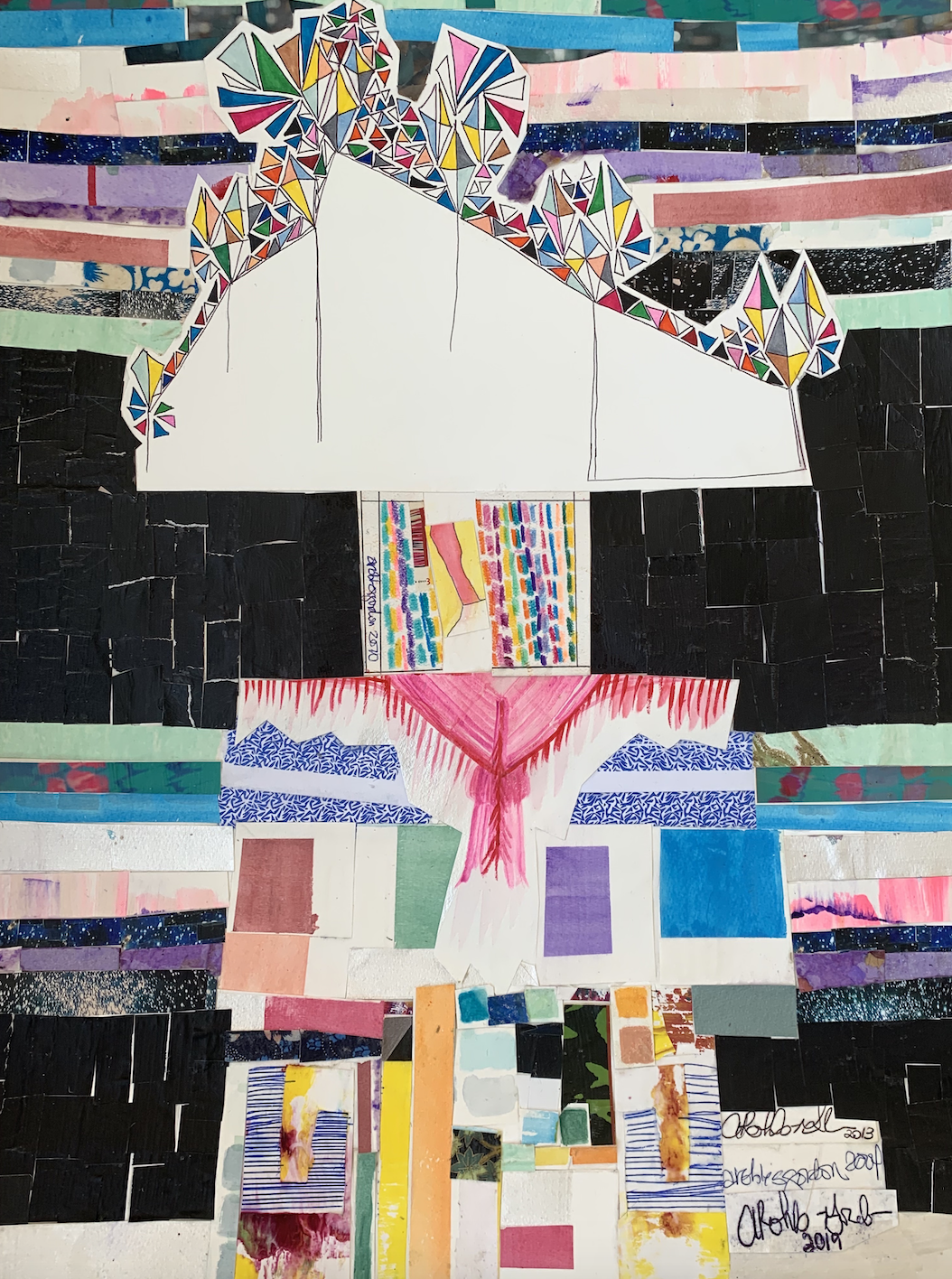
"The Temples of My Familiars" series is about the intersections between my identity, the diverse visual languages in my artwork and the narratives they reference. I chose the title because of the distinct visual reference my sculptural geometric-like renderings took on once I inverted them. They became temples, a place of spiritual practice and sacrifice in which I could place my familiars —my visual languages. A place where they could be re-rooted, re-formulated, and take on a new life.
From: Friends, To: Friends Nov 27 Part 2: On The Journey
Next, I have a show at the American University in 2021 with Amber Robles Gordon, an Afro Puerto Rican artist based in DC. It will be a solo show of just abstract work, which is exciting for me, because I don't think I've done a solo presentation of just abstraction.
Read MoreRecent initiatives of our Galería de Arte at Universidad del Sagrado Corazón, The director of Galería de Arte, Norma Vila, interviewed Amber Robles Gordon, our visiting artist.
Since its inception, the Galería’s mission has been to offer the university and general public a heterogeneous program that researches and documents current humanistic issues through Puerto Rican art. Beyond working the heterogeneous within the artistic manifestations, as an institution driven by its civic and academic mission, we have opted to provide space to projects and artists whose voices promote social justice issues. Intersectional topics such as gender, race, beliefs, values, and our diaspora are included in the Galería’s program and it becomes a teaching-learning laboratory for faculty and students. The Galería affords the opportunity to create interdisciplinary experiences and strengthen analytical and creative thinking.
But how to expose them to what happens outside the island? For this academic year, the Gallery decided to launch a visiting artist program and selected Washington, D.C.-based Afro-Puerto Rican artist Amber Robles Gordon. Having a visiting artist contributes to the training of students far beyond a class, it functions as an on-site journey, and strengthens ties with the community. Most importantly, visiting artists bolster our vision of lifelong education by challenging the “right answer” framework that limits the teaching and learning experiences.
At the beginning of the academic year, Robles-Gordon visited the island for the first time since she left Puerto Rico when she was very young. As our invited artist, she lodged at a residence adjacent to the campus, and gave a series of conferences to various groups of students. Her second visit to Sagrado was on November when gave a conference based on her work and artistic professional practice. She expounded on how she has broken with the stereotypes of Afro-Latin-American women and artists and how she uses her profession as support and defense of social justice.
Amber Robles Gordon is an artist known for recontextualizing non-traditional materials at different scales from two-dimensional artwork to her public works of art. Her intention is to emphasize the essentiality of spirituality and temporality within life. Robles is driven by the need to build her own distinctive path, innovate and challenge social norms, which is why her artwork is unconventional and unformulated. Her creations are representative of her personal experiences and the paradoxes within the imbalance of masculine and feminine energies in our society. Ultimately, she seeks to examine the parallels between how humanity perceives its greatest resources, men, and women, and how we treat our possessions and the environment.
From the experience of visiting the island, she created a body of artwork appropriately titled “A Place of Breath and Birth” which was to be exhibited in April 2020. However, this was cut short due to the COVID-19 pandemic. The solution to this problem was to present her work in a virtual fashion.
Having the opportunity to coordinate her two visits to our campus, exchange experiences, listen to her motivating lectures, and see in her recent artistic production, sparked in me the desire to interview her. I hope you can get to know more about Amber Robles Gordon through this conversation.
N: Place of Breath and Birth is the title of your recent production developed in Puerto Rico. Would you please elaborate on the significance of the name?
A: The title literally came from my desire to know more about where I was born and where my mother spent her childhood. Puerto Rico (PR) is both my place of birth and the place where I drew my first breath. At the time of my birth, most of my family – maternal and paternal – lived in St. Thomas, Virgin Islands. I spent the first two years of my life in St. Thomas and then moved with my mom and dad to Washington, DC. My mother—the primarily link to my birthplace—taught me Spanish and kindled my identification with ‘La Isla”. During my 2019, trip, I began my search for family members who still resided in PR. I felt that this search would cultivate a deeper relationship with Puerto Rico.
After my two visits to Puerto Rico in late 2019, I decided in early 2020 to rent an apartment in Puerto Nuevo to start producing the series “A Place of Breath and Birth.” Due to the persistent earthquakes, and the risk that they represent for the Sacred community, my exhibition was postponed, later with the start of the COVID-19 pandemic, everything worldwide changed and I had to return to Washington D.C. New works produced under the title A Place of Encouragement and Birth were moved to an online platform.
This would be my first opportunity to exhibit in the Caribbean and deepen my relationship with my birthplace, Puerto Rico, “La Isla del Encanto”. That is why I have titled the exhibition, Place of Breath and Birth. This was my original statement as an artist that gave rise to this series and it is still burning and guiding my discovery daily. The intention of the proposal for an individual exhibition at P.R. was to empower my five-year-old self. To give her the strength to fight for herself, her language and culture. I was born in San Juan, Puerto Rico and raised in Arlington, Virginia. My first language was Spanish, yet at about five years old, I came home one day and told my mother: “I was not speaking Spanish anymore”. From then on, I responded to my Spanish/English speaking mother in English only. Later, I came to understand that I had surrendered my Spanish tongue—a critical part of my cultural identity— so that I could “fit” a version of myself that could possibly coincide with the prescribed box that others had for a brown-skinned girl such as myself. Although in time, the name calling ceased, however, the micro-aggressions, insensitive questions, assumptions, and judgments about my brownness lingered. Throughout this life, time-after-time, I have had to choose to identify with my brownness/blackness over the other cultural ties that bind other Spanish speaking people with their culture.
Although, my personal narrative is the main focus of these works of art, I will continue to contextualize it within the political, socioeconomic, and environmental threads that define and are often used to control, alienate, or mistreat Puerto Ricans in general and Afro-Puerto Ricans. in particular. Also, my artwork is about the intersections of femininity, patriarchy, hybridism, and Americanism. Ultimately, I hope this narrative and this work of art will give voice to others who walk in shades of brown, who breathe within a feminine form and who do not conform to the rules… but are bold and proud.
Elemental: Tierra, Aire, Agua, Fuego, 18 x 24, 2020
N: That visit in September 2019 was your first visit to Puerto Rico. How was that first encounter?
A: Technically, my two-week trip to PR in September 2019, was my first trip there as an adult. My mother told me that I have been to PR as a young child. However, I truly had no memory of those visits. During the first trip, accompanied by my mother, we realized this was the first time we traveled alone together. I had my mother all to myself! She is an amazing human being: She is always working, helping family, friends and organizations and causes that concern her. She is always DOING something. Thus, being able to spend time with her exploring the Sagrado Corazon’s campus, local art museums and galleries, El Yunque National Rain Forest, and other places imprinted on my mother’s childhood were immeasurable. Moreover, I meet my boyfriend during this trip. So I have many good reasons to celebrate having been able to visit the island.
N: As our visiting artist you offered a presentation to 3 groups of the Art Program of the University. For those who weren’t there, would you elaborate on how you integrate your origins and beliefs with the use of various materials and vibrant colors?
A: I believe following one’s authentic internal voice is an essential part of integrating ones’ origins and beliefs and projecting this awareness into the use of whatever medium and or methods you choose to create with or live by. Creating art, is an essential method of self-joy and self-expression, and a means for sharing my concerns and connecting to a higher power.
I have known, I would be at artist since I was eight years old. Beyond being loved and cherished by my mother and father as a child; the other activities that triggered an innate and immediate positive response, was being encouraged and praised for my creativity. I recall the feeling of pride when my first or second-grade art teacher praised my artistry or being allowed to hang my artwork in the lobby of our apartment building—the Brittany, Arlington, VA—as a teenager. My life experiences have been intricately connected to my love of art and creating.
I was also encouraged to defend or advocate for the rights and appropriate treatment of myself and others. I have vivid memories, of getting in trouble, especially in school, for the right to speak my mind and claim my agency over my body and voice. I objected to middle school boys who slapped the derriere’s or snapped the bras of the girls they “liked”. I recollect the sting of the slap and my disappointment, as the school’s vice-principal referred to these personal infringements, as love-taps. I remember the anger welling up inside me, from being chastised and or punished for yelling at or chasing the perpetrator. It was clear that the boys were not held to the same standards of behavior as the girls. These and other experiences throughout my childhood unveiled deep-seated gender variances and stirred a desire to explore the underpinnings of gender inequality, which is embedded throughout my artwork.
During my graduate experience at Howard University, I was exposed to different philosophers and their views. In fact, the renowned debate between Black philosophers, Alain LeRoy Locke, and W.E.B. Du Bois regarding art as a form of individualistic and aesthetic expression, or art as propaganda to contribute to racial advancement and group expression was particularly meaningful for me. This debate further reinforced the importance and privilege of my own creativity and creative process. Using my art to give voice to others and further define my agency as women of color became even more fundamental.
N: How did visiting and living for a short time in Puerto Rico influence your work? How does this series titled A Place of Breath and Birth differ from your previous artwork?
A: I have wanted to create work about PR for most of my adult life. Growing up in the states away from most of my family and Caribbean life has fostered a longing for a pilgrimage to Puerto Rico, Antigua, Tortola, BVI, and eventually trace my roots to Africa. I initiated this process in September 2016, by reaching out to Edwin Velazquez Collazo, founder/writer of the art-blog, Puerto Rico Art News, and shared my art portfolio and my desire to exhibit in PR. Since then, we checked in periodically, and in late 2018, Edwin identified an opportunity and put me in contact with you Norma Vila, (director of the Gallery) of the Galeria de Arte in Universidad del Sagrado de Corazón.
After visiting in September and November 2019, I decided to return to the island in early 2020 to live temporarily. Being in PR allowed me to focus on cultivating a specific atmosphere and environment to create and live within. I choose a third-floor apartment with two bedrooms and a sunroom and awarded myself the largest and brightest room —the sunroom— as my studio. It has four large windows and exposure to three-dimensional light every hour of the day. We filled the studio with about thirty-eight variations of plants, a futon, a printer, a storage shelf, and of course my artwork. While sitting on my futon I could watch the palm trees bend and dance to the shifts and variances of the changing weather. The standing view revealed both my immediate block life, vibrancy, greenery, music, and the loud barking little dogs below. Because I can see above all the other two-story buildings, I have an expanded vista, about 3-5 miles out, I can see the outdoor portion of the Tren Urbano, PR’s transit system. Then, about 15-20 miles away, I can see the outer fringe of city-life with looming lights and high rises.
These variances of space, environments, and time influenced this body of artwork by effecting my interpretation of and relationship to spatiality. In these pieces, I convey both my internal feelings and external environment by the layer of materials so that they create divisions depicting various planes of existence throughout these compositions. This formula allowed me to manifest multiple representations of atmospheric ecosystems. My time in PR provided the environment and time, to focus on expanding my perspective of and a sense of ownership of self, of land, culture, and of elements through the landscape. In this context, my commitment to sketch at least every other day, yielded sketches, primarily a combination of line drawings and geometric shapes, which lead to sacred geometry like renderings and some figuration. Later, these sketches from integral parts of the overall design of the entire series.
N: Sometimes as artists we devise a platform and strategies that later require adapting the idea to the circumstances. This project has not been unrelated to circumstances beyond our control (earthquakes, power outages, COVID-19). Do you consider that these circumstances have had an impact on the development of your work, be it emotional, mental, or cultural?
A: I have had to be malleable in my behavior and expectations regarding this exhibition and about the circumstances that impacted this endeavor. However, my level of commitment to the process and the incremental revelations that surfaced during my time in PR were so defining and nourishing, I had no choice but to move forward.
N: Referring to the title of your project A Place of Breath and Birth. Do you still think Puerto Rico is a place of breath? And, if so, in what sense?
Puerto Rico will always be my Place of Breath and Birth, and I welcome opportunities to continue to learn about, build community and experiences to further know that part of myself and heritage.
I also become aware that, I am imprinted by my mom’s memories of her childhood home. During my visit, I witnessed the change in accent and the increased level of attachment and comfort she felt in PR. Apparently, this was also observed by you, Norma (director of the Gallery), I remember you mentioned that she sounded more Puerto Rican every day on the island. I think I also witnessed the charm of the island through the way my mother felt – how she cooked, danced, and delighted in her Afro-Latinity; all the things that have influenced my sense of identity.
COVID-19 Times
N: How was your studio practice interrupted by the lockdown? How has your work changed because of the lockdown?
A: Yes, there was an interesting continuum of things in life that impacted my production in the studio, in my life, and even in the planning of this project during these first months of 2020. I used the first phase of my residency on the island to locate my house and my studio in Puerto Rico, which took longer than expected due to the tremors. Once I was located in my apartment, I began the second phase; exploring, photographing, and searching for resources to incorporate into the art. Then, the lockdown happened, and another level of limitations ensued.
In Puerto Rico, the quarantine was extremely strict. Most businesses were required to shut down. Only, the local government, supermarkets, some restaurants (mostly fast food establishments), and pharmacies could remain open. I could no longer go to the art supplies store when I needed supplies. Yet, I still had deadlines to meet for upcoming exhibitions and or projects. I had to conform myself to using whatever was already in my possession to create this body of artwork.
N: What are you working on right now?
A: Right now, I am working on artwork for my solo exhibition, Secession, at Katzen Center, in the American University in September 2020. The Place of Breath and Birth series will also be a part of that exhibit. This exhibit will also include the other set of artworks, 8-10 quilts, I worked on while in PR.
N: What are you reading, both online and off?
A: I am not an avid book reader. More often, I listen to audiobooks and or listen to informational videos. I also spend a lot of time reading online articles about art in general from a select number of online art publications: https://hyperallergic.com, https://bmoreart.com and https://www.artsy.net. Daily, I read numerous online articles and posts about current issues, such as politics and social justice issues and happenings.
N: Have you visited any good virtual exhibitions recently?
A: I was drawn in by the work of María Magdalena Campos-Pons, Untitled, from the series When I am not Here, Estoy allá, 1996. The exhibit also features artwork by James A. Porter and Carmen Lomas Garza. Eye to I: Self Portraits from the National Portrait Gallery, at the Boca Raton Museum of Art. With the term “self-conscious” as its starting point, the exhibition Eye to I is a cherry-picking of self-portraits by major artists in the Smithsonian’s National Portrait Gallery.
With the term “self-conscious” as its starting point, the exhibition Eye to I is a cherry-picking of self-portraits by major artists in the Smithsonian’s National Portrait Gallery. With a wide range of depictions spanning over a century, this thoughtful presentation straddles themes from cultural identity to body positivity. Catch up with it in this six-minute video tour.
N: Have you taken up any new hobbies?
A: Honestly, although I am now back in DC and I have not had the time to start a new hobby yet. Most of my time is divided into creating artwork, administrative tasks, cooking, grocery shopping, exercising, and spending time with my family and loved ones.
N: What is the first place you want to travel to once this is over?
A: Huh, that is a good question. Since 2015, I have traveled to Thailand, Italy, Miami, Morocco, and Puerto Rico. So, although I absolutely welcome the opportunity to travel again, I do not have a specific place in mind as of right now. Future plans include continuing my familial pilgrimage, by spending more time in Puerto Rico, visiting Tortola, and then tracing my African roots.
N: If you are feeling stuck while self-isolating, what is your best method for getting unstuck?
A: I am fortunate that my self-isolation has included my boyfriend and my mother, brother, and niece who live a few blocks away. So, when I am feeling stuck or frustrated, we go for a walk, visit family, plant some plants, or simply watch a good Science Fiction movie.
N: What was the last TV show, movie, or YouTube video you watched?
A: Right now, we are watching the Star Trek Discovery series. In mid-May we gathered at my mom’s house on a Sunday evening and made a YouTube collection of the songs she would play (vinyl long-playing 45s records) on either Saturday or Sunday mornings before we did our chores. This collection included songs from when we were between 5 to 17 years of age. Among them are: “I love Trash”, “ I left my Cookies at the Disco” by the Sesame Street crew; three of Tracy Chapman’s 1988 chartbusters: Fast Car and Talkin’ Bout a Revolution, and Mountains o’ Things. On the Latin side we focused on Juan Luis Guerra y 440’s Ojalá que llueva Café, Bachata Rosa, and Burbujas De Amor; and Puerto Rican Yomo Torro’s “Don’t Bury my Clothes”.
Alma Thomas’ Apollo 12 “Splash Down,” 1970
N: If you could have one famous work of art with you, what would it be?
A: I would love to live with Alma Thomas’ Apollo 12 “Splash Down,” 1970. I was eight years old when I first saw Alma Thomas work. My mom, then a student at Georgetown University, was taken a course on African American Art, which included a project to see Thomas’ work exhibited at Howard University. My mom says I stood in front of her work—my eyes huge while holding my breath—mesmerized by her work.
N: What are you most looking forward to doing once social distancing has been lifted?
A: Recently, I have been craving tuna salad sandwiches from El Meson or the “Tres Leches” dessert at La Casita Blanca, local bastions of Puerto Rico’s Cocina Criolla (traditional Puerto Rican cuisine). Also, I hope that I can attend my opening at American University in fall, 2020.
Artist Lecture: Amber Robles-Gordon
Hosted by American University Studio Art Department
Artist Website: https://www.amberroblesgordon.com/
Amber Robles-Gordon, MFA, is a mixed media visual artist, of Puerto Rican and West Indian heritage. Known for recontextualizing non-traditional materials, her assemblages, large sculptures, installations, and public artwork emphasize the essentialness of spirituality and temporality within life. Driven by the need to construct her own finite path, innovate and challenge social norms, her artwork is unconventional and non- formulaic. Ultimately her creations are representational of her personal experiences and the paradoxes within the imbalance of masculine and feminine energies within our society.
Robles-Gordon has over fifteen years of exhibiting, art education, and exhibition coordinating experience. She
received a Bachelor of Science, Business Administration in 2005 at Trinity University, and subsequently a Master’s in Fine Arts (Painting) in 2011 from Howard University, Washington, DC. At Howard University she received annual awards and accolades for her artwork.
She has exhibited nationally and in Germany, Italy, Malaysia, London, and Spain. Robles- Gordon is proficient in American Sign-Language and has traveled throughout the US, Latin America, the Caribbean, Europe, Northern Africa, and Southeast Asia. Her exhibitions and artwork have been reviewed and/or featured in the Washington Post, Washington City Paper, Washington Informer, Examiner, WAMU American University Radio, WPFW 89.3, MSNBC the grio, Hyperallergeric, Ebony.com, Houston Chronicle, Miami Herald, Huffington Post, Bmore Art Magazine, Callaloo Art & Culture in the African Diaspora and Sugarcane Magazine, Support Black Art and other various publications.
Robles-Gordon was also commissioned to create temporary and permanent public art installations for numerous art fairs and agencies such as the DC Commission on the Arts and Humanities, DCCAH, Northern Virginia Fine Arts Association (NVFAA), Humanities Council of Washington, D.C., Howard University, James C. Porter Colloquium, Schomburg Center for Research in Black Culture, the Washington Projects for the Arts, Salisbury University, Martha’s Table, DC Department of General Services and Democracy Fund. Additionally, she
has been commissioned and or featured to teach workshops, give commentary, and or present about her artwork by the Smithsonian Anacostia Museum, Luther College, WETA Television, Al Jazeera, WPFW 89.3fm, WAMU | American University Radio, The Kojo Nnamdi Show, Howard University James A. Porter Colloquium, David C. Driskell Center, the Phillips Collection, the African American Museum in Philadelphia, Mc Daniel College, Salisbury University, Harvey B. Gantt Center, Phillips Collection, American University, and National Museum of African American History and Culture.
Throughout her career, she serves as an advocate for the Washington, DC area arts community. From November 2004 through July 2012, Robles-Gordon has been an active member of the Black Artists DC, (BADC) serving as exhibitions coordinator, Vice President, and President. BADC, a 20-year old member organization of individual of Black-Afrikan ancestry, includes artists, arts administrators, educators, dealers, collectors, museum directors, curators, gallery owners, and arts enthusiasts. Robles-Gordon is also the Co- Founder of Delusions of Grandeur Artist Collective.
In 2010, Robles-Gordon was granted apprenticeship to create a public art installation with the DC Commission on the Arts and Humanities, D.C. Creates Public Arts Program. In 2012, Robles-Gordon was selected to present for the Under the Influence competition as part of
the 30 Americans Exhibition at the Corcoran Gallery of Art.
In 2016, Robles-Gordon was selected for a teaching residency by the Centro Cultural Costarricense-Norteamericano, Back to the Roots, in Limon, Costa Rica. In 2017, she was awarded an additional teaching residency with Washington Projects for the Arts and DC Public Schools. In 2018, Robles-Gordon spent two weeks in Thailand studying and photographing Thai art and culture. In January 2019, Robles-Gordon completed a two- week Artist/Scholar residency at the American Academy, Rome, AAR, Italy. At the end of this residency, Robes-Gordon was granted the opportunity to exhibit her completed work at AAR.
Further, in July 2019, she completed a two-month artist-in-residence and temporary public art commission, titled Fertile Grounds: Of Minds, Wombs, and of the Earth, at the Nicholson Project, artist residency program. In fall 2019, Robles-Gordon was commissioned by DC Department of General Services, for a public artwork at the Ida B. Wells Middle School, DC Public Schools. In Summer 2020, Robles-Gordon will be featured in the first online solo exhibition, Place of Breath and Birth, at Galleria de Arte, Universidad del Sagrado Corazón, (Sacred Heart University), in her birthplace of San Juan, Puerto Rico, (PR). This will be followed by a fall 2020, solo exhibition, Secession, at American University, Katzen Art Center.
COLD HANDS, WARM HEART: MYTHS OF BLACK WOMANHOOD BY DEIRDRE DARDEN
Curator Deirdre Darden has assembled a thoughtful and poignant group exhibition featuring artists: Asha Elana Casey, Amber Robles Gordon, Helina Metaferia, and Tsedaye Makonnen.
Amber Robles-Gordon’s Colorful Abstraction of Medical and Environmental Trauma at the Nicholson Project
In DC, neighborhoods are facing an unprecedented amount of change in appearance, racial makeup, and social policies that runs counter to the once-prevalent idea of DC being “Chocolate City.” However, there are ways to balance change with paying respects to DC’s living history. The Nicholson Project, an artist residency that recently opened in Ward 7, hopes to demonstrate this change effectively with the inaugural resident artist Amber Robles-Gordon, who lives only eight minutes from the building. For me, it feels like a house turned into a relic, with its period-accurate rehab details; however, the Nicholson Project owners do not focus on the actual former owners, but highlight contemporary artists of color instead.
Read More
